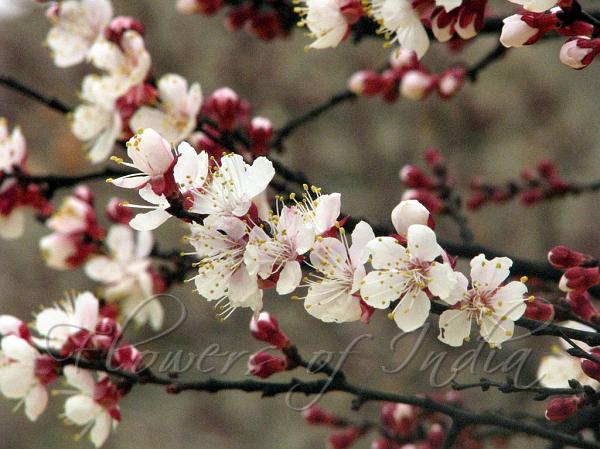|
| Apricot |
|

|

| File size | 347388 |
| Original date | 3/31/08 2:06 PM |
| Resolution | 1024 x 768 |
| Flash | Flash did not fire, auto |
| Focal length | 63.1mm |
| Exposure time | 1/1600s |
| Aperture | 7.1 |
| Focus Distance | |
| Metering Mode | Multi-segment |
| Camera make | Canon |
| Camera model | Canon PowerShot S5 IS |
| Sensor type | OneChipColorArea |
|
|
|
|
Photo: |
Botanical name: Prunus armeniaca Family: Rosaceae (Rose family)
Synonyms: Armeniaca vulgaris
Synonyms: Armeniaca vulgaris
Apricot is a small tree, 8-12 m tall, with a trunk up to 40 cm in diameter
and a dense, spreading canopy. The leaves are ovate, 5-9 cm long and 4-8
cm wide, with a rounded base, a pointed tip and a finely serrated margin.
The flowers are 2-4.5 cm diameter, with five white to pinkish petals; they
are produced singly or in pairs in early spring before the leaves. The
fruit is a drupe similar to a small peach, 1.5-2.5 cm diameter (larger in
some modern cultivars), from yellow to orange, often tinged red on the
side most exposed to the sun. Its surface is usually pubescent. The single
seed is enclosed in a hard stony shell, often called a "stone", with a
grainy, smooth texture except for three ridges running down one side.
The apricot was known in Armenia during ancient times, and has been
cultivated there for so long it is often thought to be native there. Its
scientific name Prunus armeniaca (Armenian plum) derives from that
assumption. Some believe that it was cultivated in India in 3000 BC.
| Identification credit: Abdul Rahim | Photographed in J&K & Himachal Pradesh. |
• Is this flower misidentified? If yes,